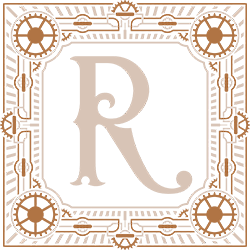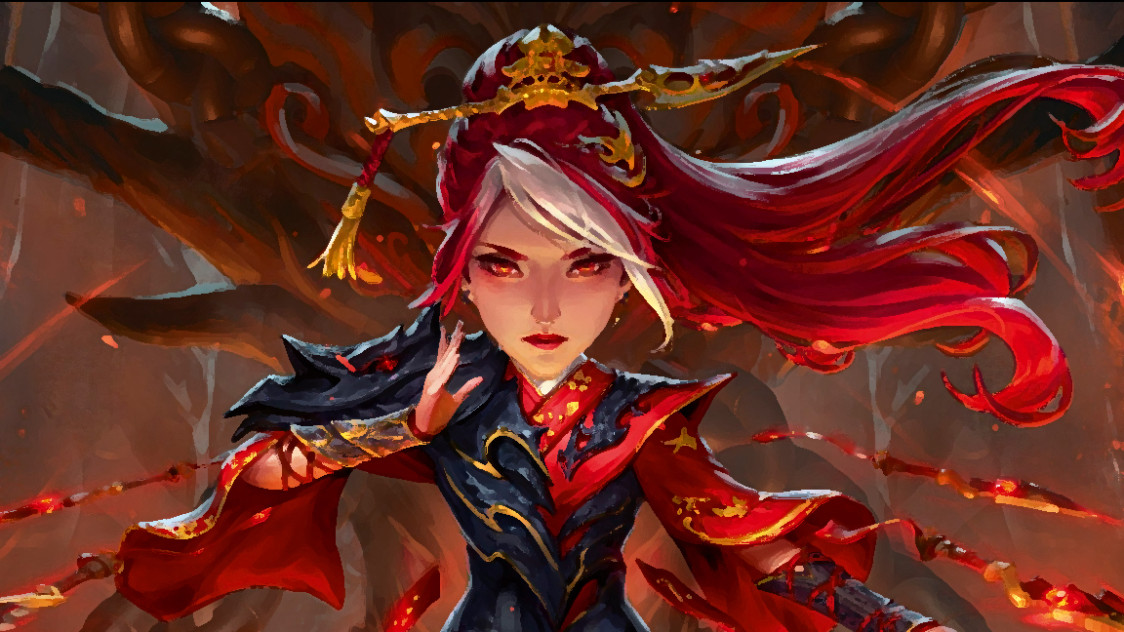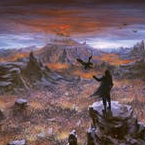This is our third installment of Junior League (after Fai and Aurora), and it represents a benchmark in our youth deckbuilding: we're pulling out some stops on the budget.
Savvy readers will note that I published Junior League: Aurora 9 months ago... and a few months after that, the deck received a major infusion of power from the Aurora Armory Deck, which subsequently pushed Aurora into Living Legend. Obviously, this was not ideal for my 7 year old Ivy; and while I'd seen the writing on the wall and laid some foundation, it still hit hard when we had to pack away the deck she'd grown attached to.
Concurrently, we'd introduced Cindra with The Hunted, and in many ways she was an ideal next step. Cindra blended the Draconic gameplay of Fai with the instant (er, reaction) speed plays of Aurora, plus she had major aesthetic appeal for my daughter. As an added bonus, Draconic art tends to use fire in place of blood, meaning most of the card pool was kid-approved.
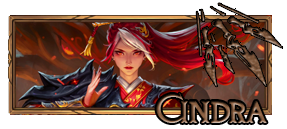
If this is your first Junior League article, let me pause for a moment to restate the parameters I use for determining a deck suitable for Junior League status. Essentially, these are skills that I deem necessary to play the deck - but also, skills that I view as achievable for a younger player. Note that this deck is the 3rd I've coached Ivy on, and as such, we've begun to push some envelopes; nonetheless, I believe Cindra aligns with these principles well.
Prerequisites
These are the skills you want your kid to have mastered before setting them up with their own deck.
1. Simple math: Addition and subtraction are essential to the game, including an understanding of the + and - symbols. It's important that they see how defending is subtracting; how the attack value of a card compares to the defense value on it; and how modifiers impact both sides of the equation.
2. Purchasing: This is the rough concept of resources: that cards have costs, and you need to pay them. It doesn't take much to impress on them that a card that pitches for 3 can pay for a lot of things. (I highly recommend a resource coin such as the ones made by metalfabtokens to keep track of 'floating' resources.)
3. Reading: The level of reading required by a deck can vary widely - and if more reading comprehension is requires on open information sources like equipment and the hero, you can supplement that for them. But they need to be able to read the cards in their hand and understand them. This may seem obvious, but there's a difference between 'able to sound out' and 'able to read in their head' - the latter is needed!
4. Sequencing: Again, the level of sequencing required can vary by deck, but I've found that it's one of the most compelling aspects of the game for my kid, so I wouldn't avoid it. When a deck has broad-strokes goals that you can articulate, they can set themselves to the task of finding how their hand can be placed in an order to make that happen. (For some, a card tray might help here.)
5. Good Sportsmanship: LSS' Armory commercial did an excellent job at portraying a realistic first Armory experience: going 0-3. If your kid isn't used to losing games, I advise you stop letting them win; it's important that they learn to find fun in a game well played, not a game won. Check yourself that you're modeling this behavior also.
6.* For lack of a better word, let's call this graphic considerations. Flesh and Blood is rated 16+, and they've taken full advantage of those generous guardrails to deliver a variety of thematic experiences that appeal to an array of players. Some of those are not going to be a fit for your kid - and how they handle that is something you want to be alert to, especially if you're planning to bring them to a public event.
The Decklist

Weapons
- Claw of Vynserakai (1)
- Kunai of Retribution (2)
Equipment
- Blood Splattered Vest (1)
- Dragonscaler Flight Path (1)
- Flick Knives (1)
- Mask of Momentum (1)
- Tide Flippers (1)
Loadout
- Arcane Polarity (Red) (3)
- Blood Runs Deep (Red) (2)
- Art of the Dragon: Fire (Red) (2)
- Blaze Headlong (Red) (3)
- Breaking Point (Red) (2)
- Ancestral Empowerment (Red) (2)
- Burning Blade Dance (Red) (3)
- Freewheeling Renegades (Red) (3)
- Hot on Their Heels (Red) (3)
- Display Loyalty (Red) (3)
- Dragon Power (Blue) (3)
- Fire Tenet: Strike First (Red) (3)
- Art of the Dragon: Blood (Red) (2)
- Art of the Dragon: Scale (Red) (2)
- Fire Tenet: Strike First (Yellow) (2)
- Hunt to the Ends of Rathe (Red) (2)
- Cut Through (Red) (3)
- Lava Vein Loyalty (Red) (3)
- Searing Touch (Red) (1)
- Brand with Cinderclaw (Blue) (3)
- Demonstrate Devotion (Red) (2)
- Hunt the Hunter (Red) (1)
- Oath of Loyalty (Red) (2)
- Lava Burst (Red) (2)
- Rake Over the Coals (Red) (2)
- Rising Resentment (Red) (3)
- Brand with Cinderclaw (Red) (3)
- Spreading Flames (Red) (3)
- Wrath of Retribution (Red) (1)
- Wax On (Red) (3)
How are we using these concepts in Cindra?
1. Math: Cindra actually doesn't do much addition - limited to a +1 here and there from cards like Cut Through or Fire Tenet: Strike First. By far the most complex math going on in the deck is Spreading Flames, which wants you to first count the chain link number, second compare it to the base damage, and if A > B, you add 1 to your damage. That's not simple by any stretch, so if you think that's beyond your young player's comfort level, drop it in favor of 3rd copies of other cards in the list. (Spreading Flames actually wasn't in Ivy's deck initially, but she saw it on streams and in other locals' decks and, recognizing its power, insisted on adding it.)
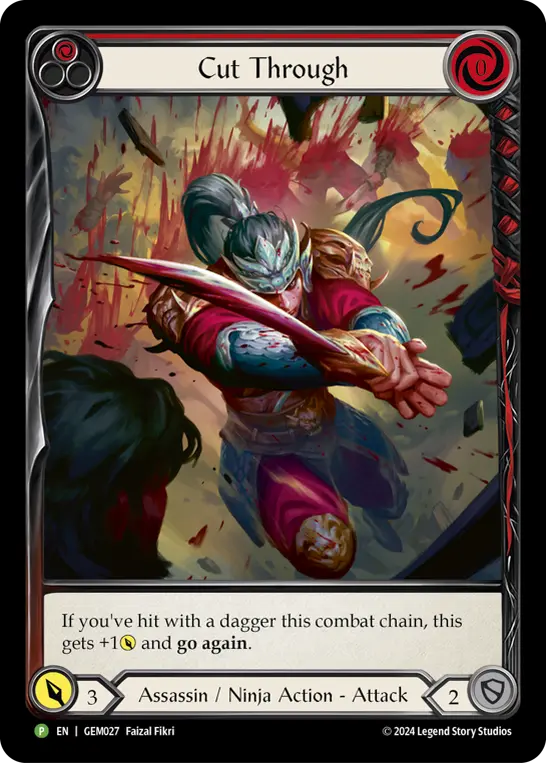


2. Purchasing: Because of the Kunai of Retribution, Cindra needs to pitch something on most turns. With a predominantly red resource curve, it's obvious which cards are intended to be pitched. But the deck also adds a new wrinkle: like Spreading Flames, we have cards which ask you to count your chain links, which in this instance reduces the cost to play them. Blood Runs Deep, Wrath of Retribution, and Art of the Dragon: Blood all incorporate resource cost reduction, and I truly recommend you include them all, even if it leads to misplays that you need to correct them on. Throwing all your daggers is just too much fun!

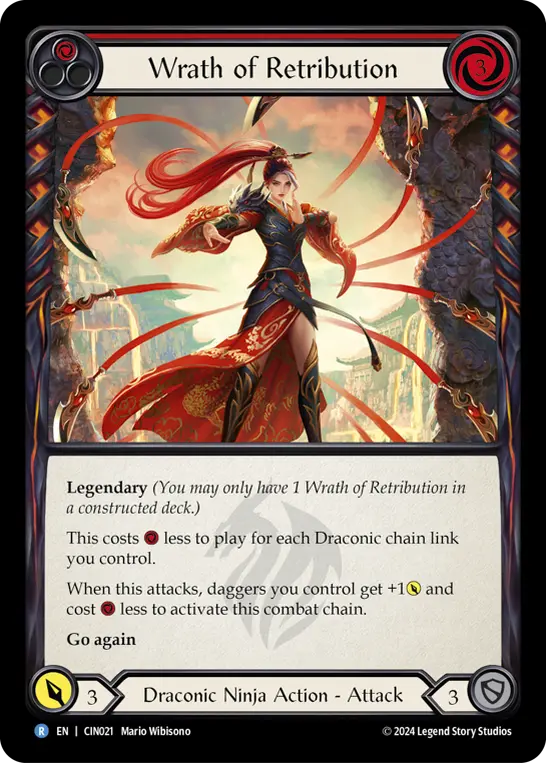

3. Reading: We continue to use the Draconic trick of "Big G Go again vs. little g go again" to denote starters and extenders, but Cindra also adds two recurring text blocks that we can build quick comprehension around:
- "If this is Draconic": These cards need something to make them Draconic, such as Fealty, to unlock their full potential.
- "You may have target dagger you control deal 1 damage": This is flick, we all call it that; and while it's explained with 2 sentences on every card that uses it, it's really not hard to understand what it's doing - especially as Kunai lack on-hit effects.
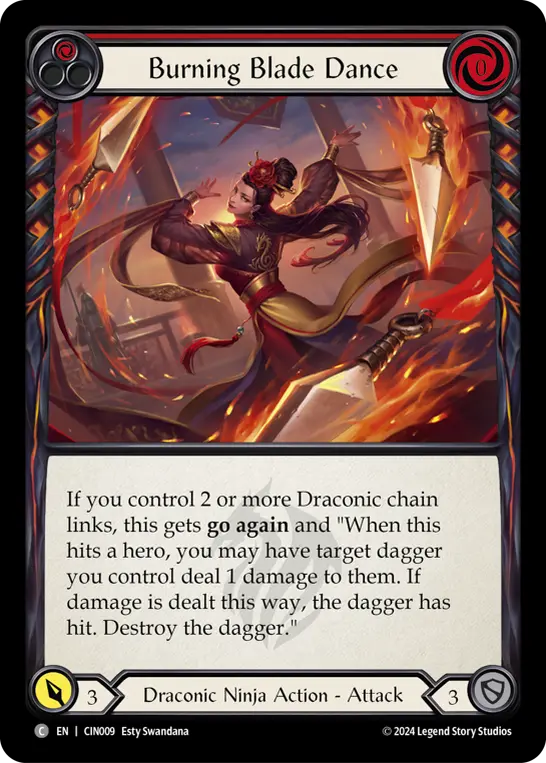
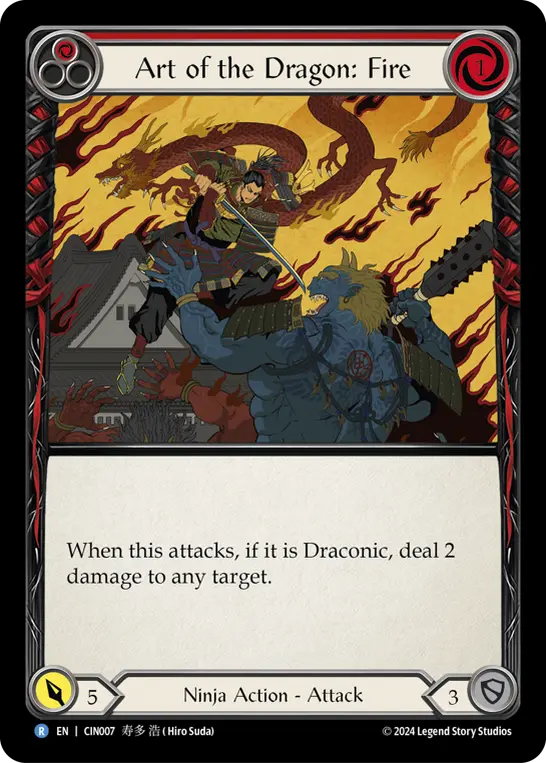
4. Sequencing: Ninjas are all about sequencing, and Cindra is no exception. Again, we have starters, extenders, and finishers present in this list; identifying the role of every card, and deciding where and if daggers also fit into the combat chain for the turn, is the core gameplay you're mastering as you learn Cindra. On top of that, we've added a layer of sequencing in the form of throwing and retrieving daggers. Thinking about Flick Knives with every single attack will become second nature as they gain reps on the deck - but at first, it's going to take overt reminders to scan your equipment constantly to ensure you've thought of everything you can and should do.



The Elephant on the Left: Equipment
I'm an advocate for budget options and for building decks that play to the strengths you have, even when they're not the strongest strengths available. However, in this case I just couldn't deny the specific gameplay enabled by the legendary equipment. I loaned Ivy the 4 equipment pieces she'd need to run Cindra as intended, and in time acquired copies of all but Flick Knives for her personal collection (an extravagance enabled in large part by fellow Rathe Times writer Ayli's stumbling into 2nd copies of Blood Splattered Vest, Dragonscaler Flight Path, and Mask of Momentum). Ideally, you have these cards in your personal collection and can loan them to the 'Junior Leaguer' you're training - but even proxies will do in a kitchen table situation, and here I might even advocate for that.
I noted Flick Knives above, but it's insane to think of Cindra without it - a decided failure from LSS, in my opinion. (I'm anxiously awaiting a lower rarity alternative that still allows you to throw your daggers more than once - Danger Digits is not the way.) Once you've got it, Flick Knives becomes a way of life, a new step in evaluating every block and planning the sequence of your attacks (and retrievals). This understanding will pave the way for future development of your FAB skills - it's truly a new awareness of combat interplay, and I'm not exaggerating when I say that Flick Knives gameplay has pushed my daughter's skills to a level where she legitimately outplays me on the regular. When the reason behind a win shifts from the strength of a hero/deck to the cunning of their plays, you've unlocked something special.



Similarly, Blood Splattered Vest gives the opportunity to nab an extra resource and make a turn work that otherwise wouldn't. It's essentially a rebate for your dagger, yes - but with chain link-based discounts and rupture effects, it can accomplish so much more. Again, this encourages thinking beyond the concrete "what is" and imagining "what could be" - which isn't something we've done much with in this series, but once more lays foundation for greater versatility of hero choices in the future.
Mask of Momentum and Dragonscaler Flight Path really work in tandem here: the former adds a meaningful on-hit to a deck that otherwise lacks them, while the latter's instant-speed activation means you can decide after the draw whether you need to extend your turn or not. These two cards are the most easily replaced, if your budget requires you to compromise; Mask of the Pouncing Lynx adds a very different kind of threat, while Snapdragon Scalers is a less optimized but less restricted version of Flight Path.
Compromises
As we've seen in Junior League before, there are a few compromises being made in this list. For one, Ravenous Rabble would be an absolutely ideal card for this deck, as it's almost always a 0-for-4 go again. But that artwork just hits Ivy in the wrong way, and until I win the lottery I can't swing the promo alt art just so she isn't repulsed by her card. Similarly, Salt the Wound - a common 1-of in Cindra lists - isn't here because of the gore.
Financially, I've not yet pulled the trigger on Concealed Blades or Throw Daggers, which are the 'standard' blues in many competitive Cindra lists. I don't think it hurts the build much to go without them, at least not to degrees felt at Armories. Ivy has thus far not wanted to pursue Ignite, and again, I don't think it's needed.
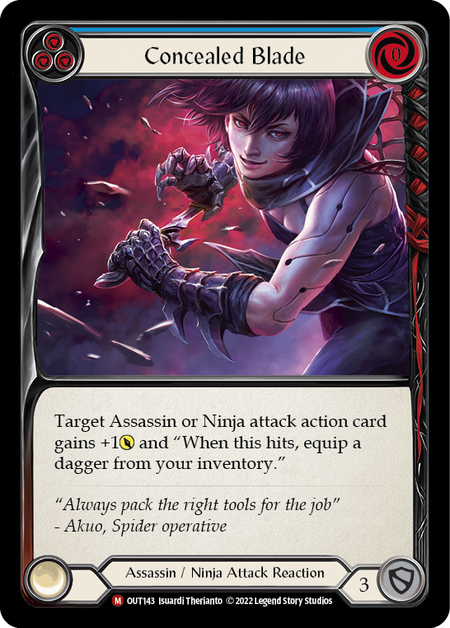


But by and large, the deck really is built out to what it should be. Equipment is often the most expensive part of a deck, and in this case I steered right into it - I don't know that there's currently an alternative, if you're trying to main Cindra. Apart from these cards, the deck is incredibly inexpensive; and by and large, it's not even compromising for that.
Results
I had worried that Aurora's untimely ascension to Living Legend was going to hit hard in this household, but my daughter took to Cindra wholeheartedly, and by now I'd say it's her definitive deck. Even when her excitement for Gravy Bones was in full swing - more on that later - Cindra remained her default deck for Armory events. She feels confident in her skills and comfortable with its play patterns.
We've had a few breakthrough moments as she's mastered the gameplay, such as when she first discovered that she could flick a dagger mid-Cut Through to give it +1 and go again in the reaction phase, or when she first found the 'flick daggers, bring them back, swing them again' lines that make Wrath of Retribution so deadly. Even if these are bread and butter plays that most of us have come to expect of Cindra, the fact that I know she knows them changes how I have to defend against her - and make games into Cindra that much more engaging.
With Cindra, we've officially reached the point where Ivy, at 7 years old, is every bit as legitimate a player as anyone else at Armory. This summer she was promoted from bye breaker to registered player; she collects her GEM packs and everything. Often, we'd compare notes on our matchups during the drive home and discover we'd ended the night with comparable records.
Cindra is simply a welcoming hero, and while she does have some complex playlines, she recurs the same ones over and over, meaning you're really only learning to watch for a narrow range of tricky plays. Once you've got 'flick a dagger', 'make an attack draconic', and 'discount your effect' down pat, you can play Cindra largely by muscle memory.
I brought her along with me to Gen Con this year, where she had Mark Poole sign her Claw of Vynserakai. She told Bryan Gottlieb she was a Cindra main, and Max Ferocity encouraged her to attempt a Cindra cosplay next time. She also picked up an Ira Armory Deck, and has taken to it with hardly any signs of a learning curve. Ninja, she says, is the class she identifies with. "It just makes sense to me."
